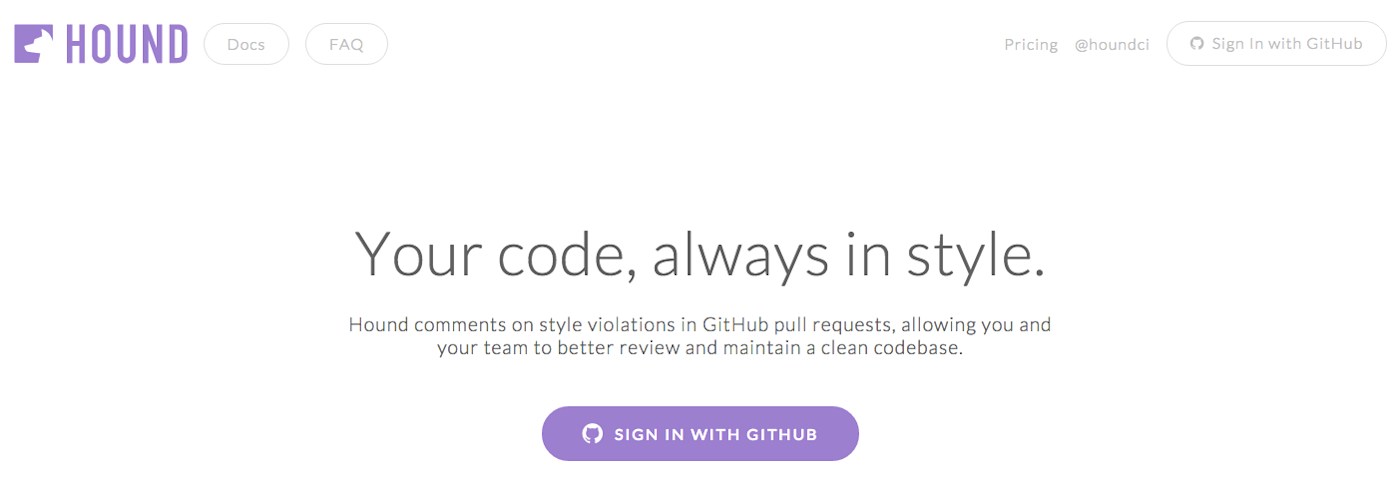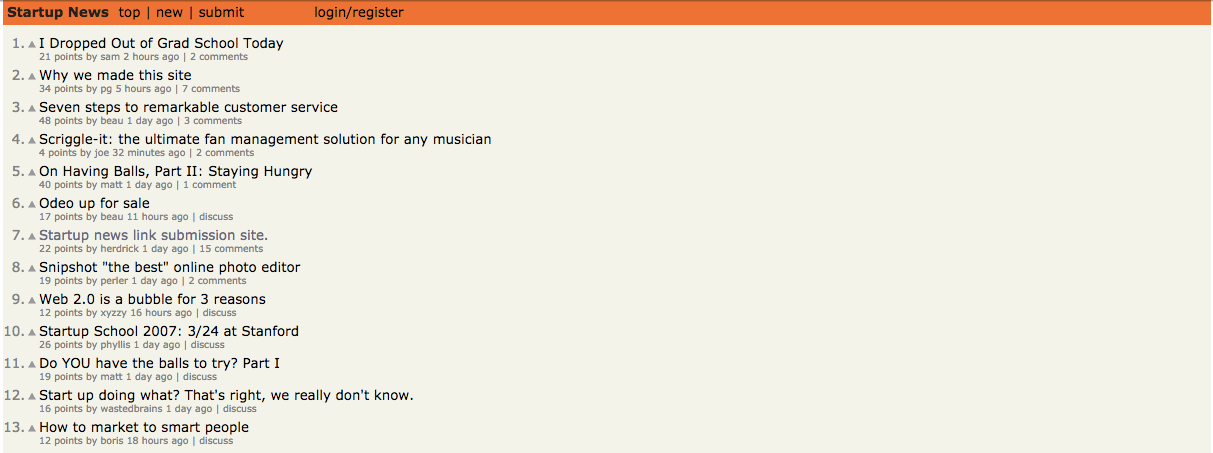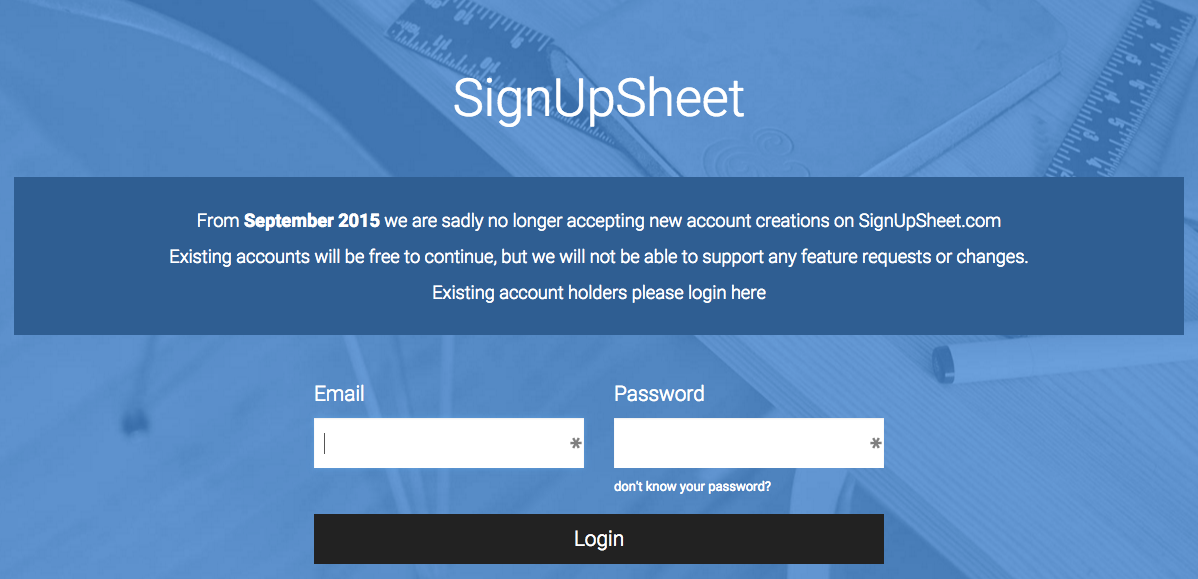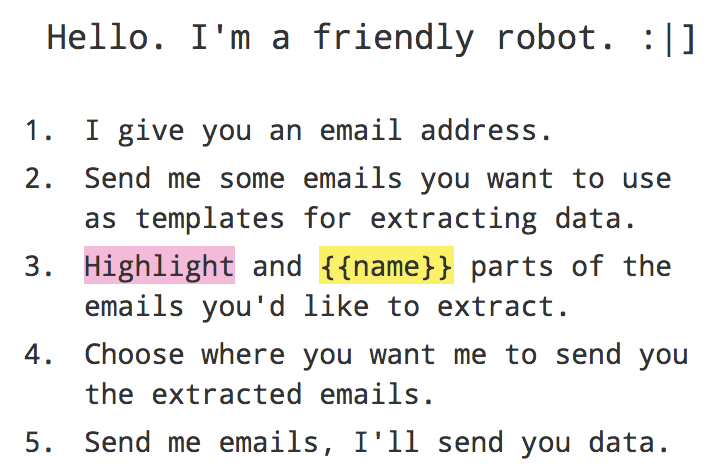The allure of a blank slate is enticing. Those ideas in the back of your head practically beg to be turned into something real. You know they could be the next big thing.
And so, in your 20% time or late at night, you start building. That's a side project, the quintessential tech dream of pulling the next great app out of your hat.
Side projects are everywhere. Gmail, Twitter, Buffer, Todoist, and Dwolla all started life as a side project, something being built on the side while the "real work" pattered on. And now, they're not just something extra attracting the time of only motivated employees. Teams of all sizes—from billion dollar apps like Instagram to upstart search engines like DuckDuckGo—are dedicating resources to creating side projects.
But why? Why would a company, especially one at the startup stage with little time or resources, deviate from their primary product to hack up something fun on the side?
Perhaps it's out of desperation, hoping for a saving spark of genius. Or maybe the team is using it as a testing ground for future plans, a place to learn something new. Something could also be spun up as a marketing tool that spreads the brand's name.
Whatever the goal, side projects—like full-fledged companies—must solve a problem to be more than just a fun diversion. Here's how 10 early and late-stage startups have used side projects to further their goals and turn around their fortunes—and how you can create your own successful side project.
Why Would a Company Build a Side Project?
Side projects come in all shapes and sizes. They might be internal tools your team only uses a few times per month, or customer-facing undertakings that eventually impact your bottom line.
Reasons for starting a side project vary, too. Here are some of the reasons that teams like those at Crew, Kissmetrics, and RJMetrics decided to run with peripheral ideas.
1. A Desperate Hail-Mary

The story of Unsplash reads like a nightmare. Then, a fairytale.
It's a side project of the team at Crew, a company that helps other companies connect with freelance designers and developers. They push your projects from idea, to prototype, to the end-user's screen.
But at one point, the team had fallen on hard times. As founder Mikael Cho put it bluntly, "We had no money. We changed our business model and had 3 months worth of cash left to turn things around. If we didn’t, we were toast. Done."
While redesigning their website, the team stumbled onto a familiar problem: every stock photo option was either awful or expensive.
We had no money. We changed our business model and had 3 months worth of cash left to turn things around. If we didn’t, we were toast. Done.
Mikael Cho, Founder of Crew
They decided to hire a photographer for their website, which led to an epiphany: Why not give the photos away for free? A $19 Tumblr theme and three hours later, Unsplash was live.
Today, Unsplash is a go-to resource for gorgeous, high-resolution photos. Anyone can download them and use them anywhere for free—no strings attached. And you can find them on everything from websites to mobile apps.

When it launched, Unsplash quickly went viral on Hacker News, a message board for tech professionals. Within ten minutes, they had 50,000 visitors flocking to the site. Referral traffic poured over to the Crew website; to date, the site has gone on to generate more than five million unique visitors, and it's Crew’s number one traffic referral source. Like I said: It reads like a startup fairytale.
Thanks to the success of Unsplash, Crew has pushed forward with other side projects, including:
An interactive guide to whether you should build an app or a website
A quiz that helps you figure out how much building a website will cost
They're so invested in side projects, they recently proclaimed them the future of marketing.
And Unsplash? The project was so fruitful that the team is turning their photo site into a book.
Unsplash was a once-in-a-lifetime win for Crew. But your side project doesn't need to go viral in order to provide long-term value for your company. Just think about a problem you deal with every day at work, consider the simplest way to solve it, and put your solution out there. You just might hit on the fix that everyone's been searching for.
2. Experiment and Learn
Not all side projects are built out of desperation. Kissmetrics was (and is) a healthy business by all accounts. They weren't facing a do-or-die situation like Crew. Rather, the self-described "analytics enthusiasts" at Kissmetrics were just curious.
They wanted to know: What would a great Google Analytics iPhone app look like? That simple question led them to create the My Analytics mobile app.
According to Lars Lofgren, the marketer on the project, the original vision of the app was two-fold. First, the Kissmetrics team wanted to see if they could turn Apple's App store into a customer acquisition channel down the road. Second, they wanted to upgrade their team’s mobile expertise, so they could then build better mobile SDKs.
Unlike Crew, who threw together a Tumblr site in three hours, Kissmetrics approached its side project in a much more systematic manner. Five Kissmetrics team members dedicated time to the project, in a precise development process.
They started by confirming the product hypothesis through a dozen interviews. Then, they leveraged their blog to channel visitors to a separate landing page, where interested people could sign up for beta access.
When the first version of the My Analytics app was released, the Kissmetrics team emailed people who had expressed interest through the dedicated landing page. That led to feedback, which led to iterations and updates—along with detailed posts about the entire development process on their blog. All told, the entire process took around 6-9 months.
My Analytics is no longer live in in the App Store, but the Kissmetrics team took valuable lessons away from the experience. They learned how to work with iOS apps, and learned what their users were expecting from the product, in a very low-leverage scenario.
Kissmetrics isn't alone. Consulting firm thoughtbot uses side projects to make learning part of their culture. For example, their iOS and Android game Rototo gave the team a chance to dip their toes into the realm of game development, a space where the team didn't have much experience. With a selling price of only $1.99, Rototo's main real benefit came from messing around with new frameworks and development methods.
You don't need to build a full app to learn something from your projects, either. A simple landing page might sharpen your HTML5 skills, perhaps, or a video could help you experiment with editing software. The project doesn't need to be profitable to produce a return on your time—the real value may come from what you've learned.
3. Position Their Brand

Everyone wants to be a leader in their chosen industry. It's a distinction that means you’re trustworthy, knowledgeable, and forward-thinking. Plus, leader-status gives you a leg-up when you're competing for customers.
That's another reason thoughtbot fosters internal side projects—they help build a reputation in the engineering community and sharpen their skills simultaneously. Take Hound as an example: it's an internal tool thoughtbot built to help them stay true to their coding style guide. It catches messy code and style violations before they go live, and comments on them in GitHub automatically.
It's a helpful tool for the thoughtbot team, but they also took the extra step to release it as an open source project. That helps establish them as a trailblazing company in the development space, from a project built to solve an internal problem.
Data analytics company RJMetrics used a similar strategy to gain standing in the web analytics world. They've built several side projects over the years, including QueryMongo.com, a tool that translates SQL queries into MongoDB syntax. It's helpful for developers who are just learning the database's structure, and includes a handy link back to RJMetrics for a bit of marketing.
But CEO Robert Moore says sometimes just building something helpful is enough on its own. "Side projects like QueryMongo.com pay huge dividends for both our brand and our lead gen efforts," says Moore. "Even though it's not an investment in our core product or a direct marketing tactic, it sends a message to the market that we are capable of building awesome technology and we're in touch with the problems they are trying to solve."

That last part is particularly valuable. As with Unsplash, lead generation is an obvious benefit for side projects. But brand positioning in a crowded market is vital. RJMetrics was able to establish credibility in its market by building a great, simple product that solved the problems of its potential customers—people who just might come back to try RJMetrics' full offerings.
It's focus on customer acquisition through these efforts that spawned a specific kind of side project strategy: engineering-as-marketing.
4. Attract More Customers

Everywhere you look—on or offline—you’re being sold something. But in some ways, society has trained itself to tune out traditional advertising. Spend all the money you want on display ads—you’re just not going to connect with some people.
What people do respond to is solutions. Everyone has problems, from innocuous things like always forgetting your keys, to real serious life problems.
If you can solve someone’s problem, you have their attention.
That’s what Crew did with Unsplash; same with RJMetrics and Query Mongo. And the industry term for those strategies is "engineering-as-marketing".
It's an increasingly popular customer acquisition strategy: Instead of spending money on ads or using social media to get visitors to the top of your funnel, the marketing team turns to engineers for help. Together they create free, simple tools that solve a problem for their desired audience, and add value.
Once launched, the side projects bring referral traffic to the top of their marketing funnel. If a few development hours can drive hundreds of leads, it's an investment worth making.
Mikael Cho of Crew points out that side projects have a longer shelf life than your traditional marketing tactics. A simple tool can offer continuing value, without eating up your team's resources. That’s an ideal situation for any cash strapped startup.
Pablo, a free tool from social media scheduling app Buffer, is an easy example. It's a simple idea—quickly build shareable images (like the one above) with a text overlay—turned into an app that saves time for those most likely to schedule social media posts.
The interface is simple and easy to navigate. And because the app encourages people to craft images for their social channels, it's a powerful magnet for attracting new Buffer customers: To date, Pablo has helped users create more than 500,000 images, from an app that directly ties into Buffer.
5. Have Fun

Side projects don't need to be serious. Sometimes they start as a "What if..." and turn into something more.
Zapier was searching for a better way to play Secret Santa with their whole team. But as a totally remote company, there's no office space where you can draw names or distribute gifts. So they came up with Conspiracy Santa.
The concept is pretty simple: Any group of coworkers can plug their email addresses into the site. The app starts an email thread for each person, cc'ing their coworkers. That way, everyone can conspire together about what to get for the recipient.
Everyone works together to find the perfect gift for a coworker, for a bit of holiday fun and team-building. And all it took was a bit of engineering time to get the email generator app up-and-running.
Sometimes just-for-fun projects can end up being a big deal, too. Magic, for example, shifted its team into an entirely new market as a full-fledged product. Its team started out building Bettir, a free blood pressure tracking app. At the same time, the four cofounders started experimenting with a text-message-based interface. They wanted to push the limits: What if you could ask for anything via SMS, and have it delivered?
They built a prototype with Twilio. Then they went viral on Hacker News and Product Hunt. And then, they decided to pivot.
Today Magic (not Bettir) is aiming to make your life more convenient by delivering everything from cookies to Mexican wrestling masks. The side project became the project.
The point is, side projects afford you the opportunity to flex creative muscles that might be dormant during regularly scheduled work activities. And who knows: Maybe your silly side project will morph into a pivot, or spark a new undertaking.
What Happens When Your Side Project Takes Off?
While many side projects start as afterthoughts, sometimes they’re so successful they become their own entities. It's not as rare as you might think, either. Here are a few examples of companies that started as a side project, and how they managed the transition.
YouCanBook.me

YouCanBook.me (YCBM, for short) was supposed to be an experiment that was developed over a weekend. It turned out to be a better business than the original one.
While Bridget Harris, is the CEO and co-founder of YCBM, and her team were working on their original product, a meeting-time finder called WhenisGood, they discovered something interesting. Users wanted to solve their scheduling and booking problems, rather than just sharing their availability manually.
Since WhenisGood only solved part of the scheduling problem, the team decided to build YCBM over a weekend. The original intent was to keep developing YCBM in conjunction with WhenisGood as demand increased.
Then something funny happened: YCBM generated more customers in the first few months than WhenIsGood had the entire year. It became obvious that their side project had more long-term potential, and all development shifted away from WhenisGood.
YCBM just passed the $1-million annual recurring revenue mark, according to Harrison, and just hit their 10-millionth booking since 2011—the last five million coming in the past 18 months! That's quite a success story for a side project.
UserConf

UserVoice’s side project, UserConf, is a unique case. While it’s not technically a separate company, it’s very much its own thing.
UserConf demonstrates that your side project doesn’t need to rely on your engineering team’s time, like most of the side projects we’ve discussed thus far.
UserVoice itself is help desk software. As part of their marketing, they had built a successful Meetup series. In an effort to build up their thought leadership and brand awareness, the UserVoice team decided to turn the success of these meetups into the first modern conference for customer service professionals.
With the help of CoSupport, UserVoice launched UserConf, a one-day conference in San Francisco focused on bringing customer service professionals together and helping them expand their professional knowledge.
Since the first UserConf three years ago, the event has expanded to other cities, including New York, Chicago, and Portland. UserConf's continued success is proof that you don’t need coding chops to succeed with a side project: Non-technical undertakings can bring just as much value to a brand as a technical solution might.
Hacker News

Hacker News is a spin off from prestigious Silicon Valley accelerator YCombinator. It's a message board and news aggregator populated by tech enthusiasts, engineers, designers, marketers, investors and more.
But Hacker News creator (and YCombinator co-founder) Paul Graham never intended to build such a robust community. He was actually just hacking together a demonstration of his new programming language Arc. Instead, he managed to create one of the go-to resources in Silicon Valley.
Hacker News quickly turned into a place where the startup community could come to ask for help and share ideas. Since its inception in 2007, Hacker News has grown to nearly 1 million unique visitors a month, and it's racked up close to 2 million posts.
But Hacker News’ value to startups extends beyond its community. Its targeted and engaged audience gives companies a great outlet for distribution. The "Hacker News Bump" real, driving six-digit traffic numbers to popular posts.
It’s no surprise that Crew used Hacker News to seed Unsplash. As did Dextro when it launched its project, Stream. It was Hacker News that brought attention these and other humble side projects and turned them into sensations.
If your startup is launching a side project, Hacker News is the best place for you to share it. You might get a few useful comments on the project, or it could bring down your site with a flood of visitors. Either way, it should be near the top of your distribution strategy. It's a side project that's the perfect place to share your side project.
What Are the Drawbacks of a Side Project?

It’s easy to get caught up in the side-projects hype. But let’s pump the brakes for a moment and consider the alternative: Is spending time on a company side project the best idea?
YouCanBook.me’s Bridget Harris offered a tempered view when asked what advice she'd give to companies considering a side project.
"Honestly? Don't do it, unless you think something is seriously not working with your main project," she says. "In hindsight what we did was more pivot to YCBM. Our real side projects, like signupsheet.com and ifallinlove.com, have been nothing but a distraction." (Editor's note: those projects are no longer operating.)
The YCBM team learned the hard way that not every side project is a game-changer. "Really, staying focused on one project is hard enough," Harris says.
Lars Lofgren echoed a similar sentiment on company side projects.
"Most side projects are a waste of time," says Lofgren. "And most of them fail. If you’re going to get value out of them, you have to commit to an ongoing process of side projects so that you can keep trying different ideas until you find one that really works. Like many aspects of the business, the process behind the project is more important than the project itself."
Remember, it’s called a side project for a reason: It shouldn’t take away from your core business. If you’re spreading your resources too thin to build a side project, it’s probably not a good idea.
How Can I Start My Own Side Project?

Now that you’ve read the potential benefits and pitfalls of a side project, perhaps you’re still interested in building one for yourself?
After speaking with numerous companies, the same basic message resonated: Start with a need, and keep it simple.
1. Find a problem
Evan Hamilton, one of the primary organizers of the first UserConf, encourages creators to think about a project's purpose.
"Make sure, as with any product, you've identified a true need," he says. "Without it, your project is pointless. As long as you're providing something that solves that need, don't worry about being fancy."
Make sure you have a target market for your side project, and that it actually fills a need. Otherwise, it's just busywork.
2. Keep it simple
Mikael Cho and Zapier CTO Bryan Helmig both offer similar advice: start small.
Think of your side project like an startup MVP (a "minimum viable product") and then make it simpler. Cho says, "Solve a problem in a much simpler way than anyone else."
Helmig, who helped build Zapier’s Email Parser and the Conspiracy Santa tool, shared a similar sentiment. "Keep it lightweight and fun—don’t bog it down with process," he says. "Try to focus on a small nugget of value that isn’t critical but might be parallel to your core line of business."
Side projects should help you improve yourself and your business—don't let them get bogged down in red tape and confusion.
3. Prepare to fail
Music streaming service Spotify relies on side projects to give their team creative energy. But Tobias van Schneider, one of their product designers, abides by a simple rule: Never take side projects too seriously.
Here's a quote from his interview with First Round Review:
"The only way a side project will work is if people give themselves permission to think simple, to change their minds, to fail—basically, to not take them too seriously," says van Schneider. "When you treat something like it’s stupid, you have fun with it, you don’t put too much structure around it. You can enjoy different types of success."
You'll never let loose if you aren't prepared to fall down. With side projects, instead of worrying about the destination, just sit back and enjoy the journey. It might work—but don't worry if it doesn't. It's just a side project, after all.
Foster Innovation with Side Projects
Okay, make sure it’s valuable and simple. Easy enough. But how does a company come up with an idea for a side project? That starts with company culture. Want to innovate? You need to build an environment of curiosity and encourage experimentation.
Creating an internal event or hackathon is a great way to spur this type of innovation within your organization.
Hackathons—which consist of teams pitching each other ideas and building them in a short period of time and then pitching them to a panel of judges—offer a creative outlet for employees. It’s an opportunity for teams to work on passion projects and build things that solve problems.
These events can be monthly, quarterly, or bi-annual, but no matter how often you host them, it’s important to encourage the flow of creative thought. This type of company culture is what will eventually lead to quality side projects.
RJMetrics is one company that routinely hosts internal events to encourage innovation. As CEO Bob Moore mentioned, "Our internal hackathons have led to countless projects like Query Mongo, including one called Props that has spun out into its own company."
Innovation starts at the top. It’s important for an executive team to challenge its team to build and create things. The idea muscle, like any other muscle, needs to be exercised regularly—so give your team the opportunity to use it.
Thus, side projects. Remember to keep them simple, make sure they're valuable to your broader goals, and don’t let it take focus from your primary product. You'll get to exercise your idea muscle, have fun, and just might create the next big thing.





